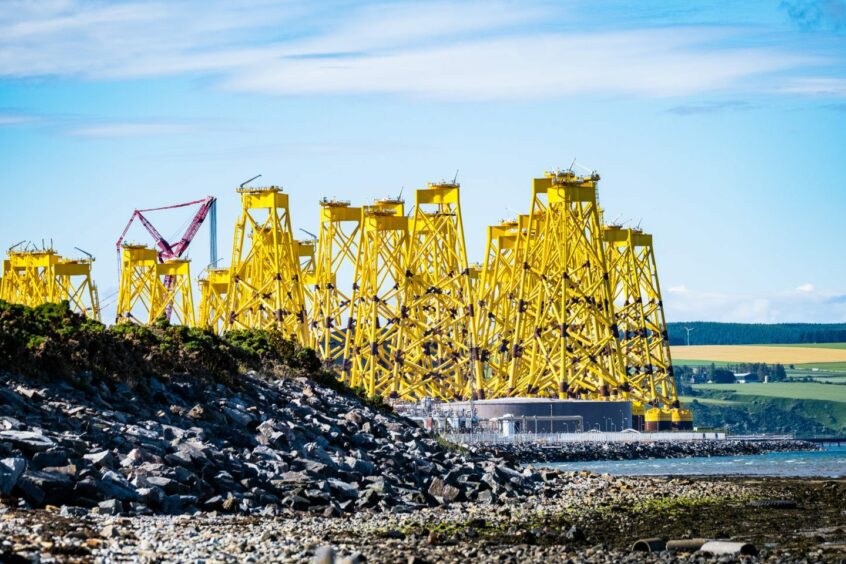
Project developers are facing multiple challenges, but the problems start long before the turbines leave the marshalling port, writes Alex Fyfe.
The offshore windfarm market has witnessed stellar growth as demand for clean energy has increased, and this growth is set to accelerate. The global demand for energy derived from windfarms will see deployments grow to reach 320GW in 2030 and 1800GW by 2050.
As has been widely reported, the cost of building offshore windfarms is rising but cost is not the biggest issue; rather it’s the size of the operational challenge.
First and second generation windfarms were constructed with the available technology rather than dedicated assets which have the ability to scale. As the size of turbines grows – from 12MW through 15MW and towards 25MW units – mass produced lifting equipment and existing logistics processes will not be big enough to handle the components.
Contractors and developers will need much more lifting and marshalling capacity, as well as cargo vessels and other support equipment to meet projected windfarm demand. They will also need to consider new approaches to the supply chain and how to plan for handling of higher volumes of larger components.
Until now, the windfarm industry has managed by transferring legacy knowledge, technology and processes from construction and oil and gas into this new sector. Going forward, windfarm construction will demand specialised logistics and handling for component shipping, assembly and load out.
More and bigger
Using data produced by Maritime Strategies International, forecasting the total number of offshore wind projects to be installed, per year, for both fixed and floating foundation windfarms, HLP believes project developers will struggle to meet demand based on current logistics practices and equipment provision.
In 2030 alone, when 54.9GW of windfarm capacity is expected to be installed, HLP estimates that the market will require 28 ring cranes with the capacity great enough to handle these larger units. In 2050 when 87.1 GW of windfarm capacity is expected to be installed, HLP estimates that the market will require 43 ring cranes.
Jacket and monopile windfarm projects, with either floating or fixed foundation usually require two ring cranes, one at each fabrication and at the marshalling/loading-unloading installation location or one at either location. Only where there is very shallow water depth, or where small, low capacity monopiles are to be used are they not required. All floating foundations require a ring crane during the turbine installation stage at quayside.
There are currently nine such ring cranes in operation, all built for nuclear power and the oil and gas industries. The downturn in conventional energy prior to the invasion of Ukraine means only three are currently employed on offshore wind projects.
HLP’s estimate of the demand for lifting capacity large enough to handle the next generation of windfarm logistics make no allowances for any growth in demand from the oil and gas, nuclear or construction sectors.
Nor does it include additional commitment for offshore wind projects, other than that already forecast. Critically, no allowances are made for any ring crane requirement for fixed turbine tower pre-assembly, foundation handling or foundation fabrication.
The supply chain charged with maintaining the steady flow of new windfarm installations is creaking and any change to our fairly conservative assumptions could cause it to break.
The future
Today, full towers are assembled on shore but the size of the next generation turbines puts this work out of reach of the largest crawler cranes. Discussions about how to manage the growing capacity of crane components suggest they may need to be loaded in sections with final assembly on the deck of the Windfarm Turbine Installation Vessel.
As well being challenge to achieve, this could prove costly. With transfer vessels commanding $350,000/day at current rates, developers would take a painful hit. It would make better economic sense to fully assemble the towers on the quay. To do so will require a re-think of methodology for tower preassembly.
Turbine manufacturers don’t favour ring cranes for this work as there are so few in the market but continuing with the previous generation of solutions and pushing more days onto the install vessel’s timeline is counter-intuitive.
This change is coming but the industry discussion has not yet begun to happen. We’re keen to start before the sector reaches a log jam in deployment and installation. Alternatives to current practice are available but there is a need for fresh perspectives and new expertise in this sector.
Alex Fyfe is Managing Director, Heavy lift Projects Ltd.
Recommended for you

 © Supplied by HLP
© Supplied by HLP